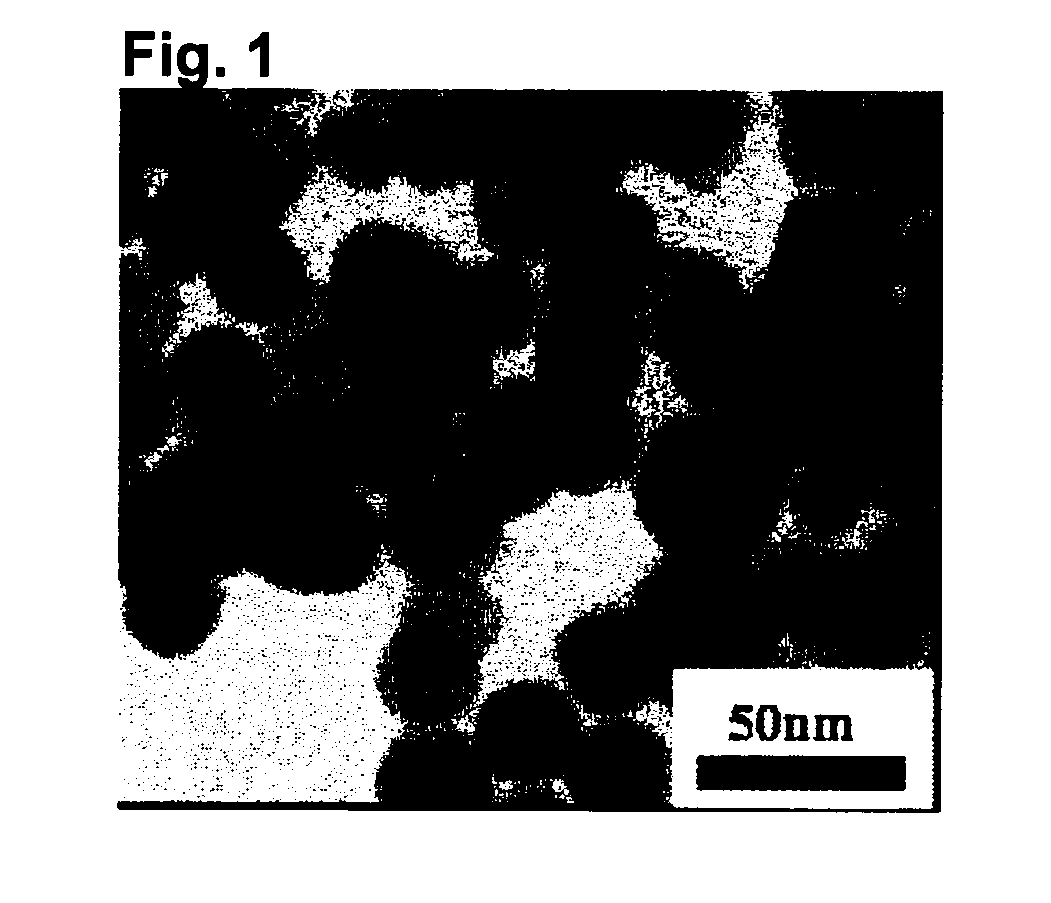Process for producing oxide crystal fine particles
- Summary
- Abstract
- Description
- Claims
- Application Information
AI Technical Summary
Benefits of technology
Problems solved by technology
Method used
Image
Examples
example 1
[0100]Cerium oxide (CeO2), barium carbonate (BaCO3) and boron oxide (B2O3) were weighed so that they will be 33.4%, 13.3% and 53.3%, respectively, as represented by mol % based on CeO2, BaO and B2O3, and thoroughly wet-mixed in an automatic mortar by means of a small amount of ethanol, followed by drying to obtain a starting material mixture.
[0101]The obtained starting material mixture was filled in a platinum container (containing 10 mass % of rhodium) provided with a nozzle for dropwise addition of a melt and heated at 1,500° C. for two hours in an electric furnace using molybdenum silicate as a heating element and completely melted (melting step). Then, the nozzle portion was heated, and the melt was dropped on twin rolls (roll diameter: 150 mm, roll rotational speed: 300 rpm, roll surface temperature: 30° C.) made of SUS316 installed below the electric furnace, to obtain a flake-form solid (rapid cooling step). The obtained flake-form solid was transparent and confirmed to be an...
example 2
[0108]Fine particles of CeO2 crystal were obtained in the same manner as in Example 1 except that the time for heating the pulverized material was changed to 32 hours. The crystallite diameter of the obtained fine particles was 22 nm, the average primary particle diameter was 26 nm, crystallite diameter:average primary particle diameter=1:1.2, and the variation coefficient of the particle diameter was 0.22.
example 3
[0109]A starting material mixture was obtained in the same manner as in Example 1 except that the mixing proportions of cerium oxide (CeO2), calcium carbonate (CaCO3) and boron oxide (B2O3) were changed to 20.0%, 35.6% and 44.4%, respectively, as represented by mol % based on CeO2, CaO and B2O3.
[0110]To this starting material mixture, the melting step and the rapid cooling step were applied in the same manner as in Example 1 to obtain an amorphous material.
[0111]The obtained amorphous material was pulverized for 8 hours by a dry ball mill using zirconia balls with 5 mm in diameter to obtain a pulverized material. The volume-based particle size distribution of the obtained pulverized material was within a range of from 0.6 μm to 17 μm, and its D90 was 7.2 μm.
[0112]The obtained pulverized material was heated at 700° C. for two hours to precipitate CeO2 crystal.
[0113]Then, this powder made of crystal-precipitated particles was added to an acetic acid aqueous solution, followed by stirr...
PUM
| Property | Measurement | Unit |
|---|---|---|
| Temperature | aaaaa | aaaaa |
| Fraction | aaaaa | aaaaa |
| Fraction | aaaaa | aaaaa |
Abstract
Description
Claims
Application Information
 Login to View More
Login to View More - R&D
- Intellectual Property
- Life Sciences
- Materials
- Tech Scout
- Unparalleled Data Quality
- Higher Quality Content
- 60% Fewer Hallucinations
Browse by: Latest US Patents, China's latest patents, Technical Efficacy Thesaurus, Application Domain, Technology Topic, Popular Technical Reports.
© 2025 PatSnap. All rights reserved.Legal|Privacy policy|Modern Slavery Act Transparency Statement|Sitemap|About US| Contact US: help@patsnap.com

